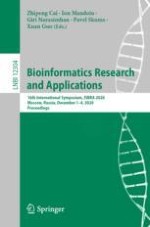2020 | OriginalPaper | Buchkapitel
SPOC: Identification of Drug Targets in Biological Networks via Set Preference Output Control
verfasst von : Hao Gao, Min Li, Fang-Xiang Wu
Erschienen in: Bioinformatics Research and Applications
Aktivieren Sie unsere intelligente Suche, um passende Fachinhalte oder Patente zu finden.
Wählen Sie Textabschnitte aus um mit Künstlicher Intelligenz passenden Patente zu finden. powered by
Markieren Sie Textabschnitte, um KI-gestützt weitere passende Inhalte zu finden. powered by
